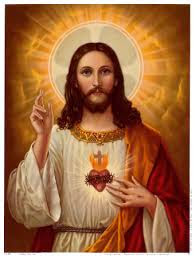Stop doubting Jesus birth, Yes, Christ Was Really Born On December 25
The Catholic Church, from at least the second century, has claimed that Christ was born on December 25. However, it is commonly alleged that our Lord Jesus Christ was not born on December 25.
For the sake of simplicity, let us set out the usual objections to the date of December 25 and counter each of them.
Objection 1: December 25 was chosen in order to replace the pagan Roman festival of Saturnalia. Saturnalia was a popular winter festival and so the
Catholic Church prudently substituted Christmas in its place.
Reply to Objection 1: Saturnalia
commemorated the winter solstice. Yet the winter solstice falls on December 22.
It is true that Saturnalia celebrations began as early as December 17 and extended till December 23. Still, the dates don’t match up.
Objection 2: December 25 was chosen to replace the pagan Roman holiday Natalis Solis Invicti which means “Birthday of the Unconquered Sun.”
Reply to Objection 2: Let us examine first the cult of the Unconquered Sun. The Emperor Aurelian introduced the cult of the Sol Invictus or Unconquered Sun to Rome in A.D. 274. Aurelian found political traction with this cult, because his own name Aurelian derives from the Latin word aurora denoting “sunrise.”
Coins reveal that Emperor Aurelian called himself the Pontifex Solis or Pontiff of the Sun. Thus, Aurelian simply accommodated a generic solar cult and identified his name with it at the end of the third century.
Most importantly, there is no historical record for a celebration Natalis Sol Invictus on December 25 prior to A.D. 354. Within an illuminated manuscript for the year A.D. 354, there is an entry
for December 25 reading “N INVICTI CM Bleep.” Here N means “nativity.” INVICTI means “of the Unconquered.” CM signifies “circenses missus” or “games
ordered.” The Roman numeral Bleep
equals thirty. Thus, the inscription
means that thirty games were order for the nativity of the Unconquered for December 25th. Note that the word “sun” is not present. Moreover, the very same codex also lists “natus Christus in
Betleem Iudeae” for the day of December 25. The phrase is translated as “birth of Christ in Bethlehem of Judea.”
The date of December 25th only became the “Birthday of the Unconquered Sun” under the Emperor Julian the Apostate.
Julian the Apostate had been a Christian but who had apostatized and returned to Roman paganism. History reveals that it was the hateful former Christian Emperor that erected a pagan holiday on
December 25. Think about that for a moment. What was he trying to replace?
These historical facts reveal that the Unconquered Sun was not likely a popular deity in the Roman Empire. The Roman people did not need to be weaned off of a so-called ancient holiday. Moreover, the tradition of a
December 25th celebration does not find a place on the Roman calendar until after the Christianization of Rome. The
“Birthday of the Unconquered Sun” holiday was scarcely traditional and hardly popular. Saturnalia (mentioned above) was much more popular, traditional, and fun. It seems, rather, that Julian the Apostate had attempted to
introduce a pagan holiday in order to replace the Christian one!
Objection 3: Christ could not have been born in December since Saint Luke describes shepherds herding in the neighboring fields of Bethlehem.
Shepherds do not herd during the
winter. Thus, Christ was not born in winter.
Reply to Objection 3: Recall that Palestine is not England, Russia, or Alaska. Bethlehem is situated at the latitude of 31.7. Dallas, Texas has the latitude of 32.8, and it’s still rather comfortable outside in December. As the great Cornelius a Lapide remarks during his lifetime, one could still see shepherds and sheep in the fields of Italy during late December, and Italy is at higher latitude than Bethlehem.
Now we move on to establishing the birthday of Christ from Sacred Scripture in two steps. The first step is to use Scripture to determine the birthday of Saint John the Baptist. The next step is
using Saint John the Baptist’s birthday as the key for finding Christ’s birthday. We can discover that Christ was born in late
December by observing first the time of year in which Saint Luke describes Saint Zacharias in the temple. This provides us with the approximate conception date
of Saint John the Baptist. From there we can follow the chronology that Saint Luke gives, and that lands us at the end of December.
Saint Luke reports that Zacharias served in the “course of Abias” (Lk 1:5) which Scripture records as the eighth course among the twenty-four priestly courses (Neh 12:17). Each shift of priests served one week in the temple for two times
each year. The course of Abias served during the eighth week and the thirty-second week in the annual cycle.
However, when did the cycle of
courses begin?
Josef Heinrich Friedlieb has convincingly established that the first priestly course of Jojarib was on duty during the destruction of Jerusalem on the ninth day of the Jewish month of Av. Thus the priestly course of Jojarib was on
duty during the second week of Av.
Consequently, the priestly course of Abias (the course of Saint Zacharias) was undoubtedly serving during the second week of the Jewish month of Tishri—the
very week of the Day of Atonement on the tenth day of Tishri. In our calendar, the Day of Atonement would land anywhere from September 22 to October 8.
Zacharias and Elizabeth conceived John the Baptist immediately after Zacharias served his course. This entails that Saint John the Baptist would have been conceived somewhere around the end
of September, placing John’s birth at the end of June, confirming the Catholic Church’s celebration of the Nativity of Saint John the Baptist on June 24.
Immediately after this entry into the temple and message of the Archangel Gabriel, Zacharias and Elizabeth conceive John the Baptist. Allowing for forty weeks of gestation, this places the birth
of John the Baptist at the end of June—once again confirming the Catholic date for the Nativity of Saint John the Baptist on June 24.
The rest of the dating is rather simple.
We read that just after the Virgin Mary conceived Christ, she went
to visit her cousin Elizabeth who was six months pregnant with John the Baptist.
This means that John the Baptist was six months older that our Lord Jesus Christ (Lk 1:24-27, 36). If you add six months to June 24 you get December 24-25 as the birthday of Christ. Then, if you subtract nine months from December 25 you get that the Annunciation was March 25. All the dates match up perfectly. So then, if John the Baptist was
conceived shortly after the Jewish Day of the Atonement, then the traditional Catholic dates are essentially correct. The birth of Christ would be about or on December 25.
Sacred Tradition also confirms December 25 as the birthday of the Son of God. The source of this ancient tradition is the Blessed Virgin Mary herself. Ask any
mother about the birth of her children. She will not only give you the date of the birth, but she will be able to rattle off the time, the location, the weather, the weight of the baby, the length of the baby, and a number of other details.
Now ask yourself: Would the Blessed Virgin Mary ever forget the birth of her Son Jesus Christ who was conceived without human seed, proclaimed by angels, born in a miraculous way, and visited by Magi? She knew from the moment of His incarnation in her stainless womb that He was the Son of God and Messiah. Would she ever forget
that day?
Next, ask yourself: Would the Apostles be interested in hearing Mary tell the story?
Of course they would. Do you think the holy Apostle who wrote, “And the Word was made flesh,” was not interested in the minute details of His birth? Even when we walk around with our kids son, people always ask “How
old is he?” or “When was he born?”
Don’t you think people asked this
question of Mary?
So the exact birth date (December 25) and the time (midnight) would have been known in the first century.
Moreover, the Apostles would have asked about it and would have, no doubt, commemorated the blessed event that both Saint Matthew and Saint Luke chronicle for us. In summary, it is completely reasonable to state that the early Christians both knew and commemorated the birth of Christ. Their source would have been His Immaculate Mother.
Further testimony reveals that the
Church Fathers claimed December 25 as the Birthday of Christ prior to the conversion of Constantine and the Roman Empire. The earliest record of this is that Pope Saint Telesphorus (reigned A.D. 126-137) instituted the tradition of Midnight Mass on Christmas
Eve. Although the Liber Pontificalis does not give us the date of Christmas, it assumes that the Pope was already celebrating Christmas and that a Mass at
midnight was added. During this time, we also read the following words of Theophilus (A.D. 115-181), Catholic bishop of Caesarea in Palestine: “We ought to celebrate the birthday of Our
Lord on what day soever the 25th of December shall happen.”[vi]
Shortly thereafter in the second century, Saint Hippolytus (A.D. 170-240) wrote in passing that the birth of Christ occurred
on December 25:
"The First Advent of our Lord in the flesh occurred when He was born in Bethlehem, was December 25th, a Wednesday, while Augustus was in his forty-second year, which is five thousand and five hundred years from Adam. He suffered in the thirty-third year, March 25th, Friday, the eighteenth
year of Tiberius Caesar, while Rufus and Roubellion were Consuls.
Also note in the quote above the special significance of March 25, which marks the death of Christ (March 25 was assumed to corresponded to the Hebrew month Nisan 14 – the traditional
date of crucifixion). Christ, as the
perfect man, was believed to have been conceived and died on the same day— March 25. In his Chronicon, Saint Hippolytus states that the earth was created on March 25, 5500 B.C. Thus,
March 25 was identified by the Church Fathers as the Creation date of the universe, as the date of the Annunciation and Incarnation of Christ, and also as the date of the Death of
Christ our Savior.
In the Syrian Church, March 25 or the Feast of the Annunciation was seen as one of the most important feasts of the entire year. It denoted the day that God took up his abode in the womb of the Virgin. In fact, if the Annunciation and Good Friday came into conflict on the calendar, the Annunciation trumped it, so important was the day in Syrian tradition. It goes without saying that the Syrian Church preserved some of the most ancient Christian traditions and had a sweet and profound devotion for the Incarnation of Christ.
Now then, March 25 was enshrined in the early Christian tradition, and from this date it is easy to discern the date of Christ’s birth. March 25 (Christ conceived
by the Holy Ghost) plus nine months brings us to December 25 (the birth of Christ at Bethlehem).
Saint Augustine confirms this tradition of March 25 as the Messianic conception and December 25 as His birth:
"For Christ is believed to have been conceived on the 25th of March, upon which day also he suffered; so the womb of the Virgin, in which he was conceived, where no one of mortals was begotten, corresponds to the new grave in which he was buried, wherein was never man laid, neither before him nor since. But he was born, according to tradition, upon December the 25th."
In about A.D. 400, Saint Augustine also noted how the schismatic Donatists celebrated December 25 as the birth of Christ, but that the schismatics refused to celebrate Epiphany on January 6, since they regarded Epiphany as a new feast without a basis in Apostolic Tradition. The Donatist schism
originated in A.D. 311 which may
indicate that the Latin Church was
celebrating a December 25 Christmas (but not a January 6 Epiphany) before A.D. 311. Whichever is the case, the
liturgical celebration of Christ’s birth was commemorated in Rome on December 25 long before Christianity became
legalized and long before our earliest record of a pagan feast for the birthday of the Unconquered Sun. For these reasons, it is reasonable and right to hold that Christ was born on December
25 around 1 B.C. and that he died and rose again in March around A.D. 33.
Source: nairaland.com






Comments
Post a Comment